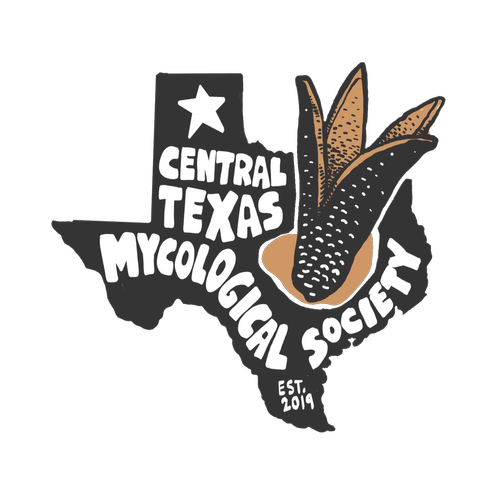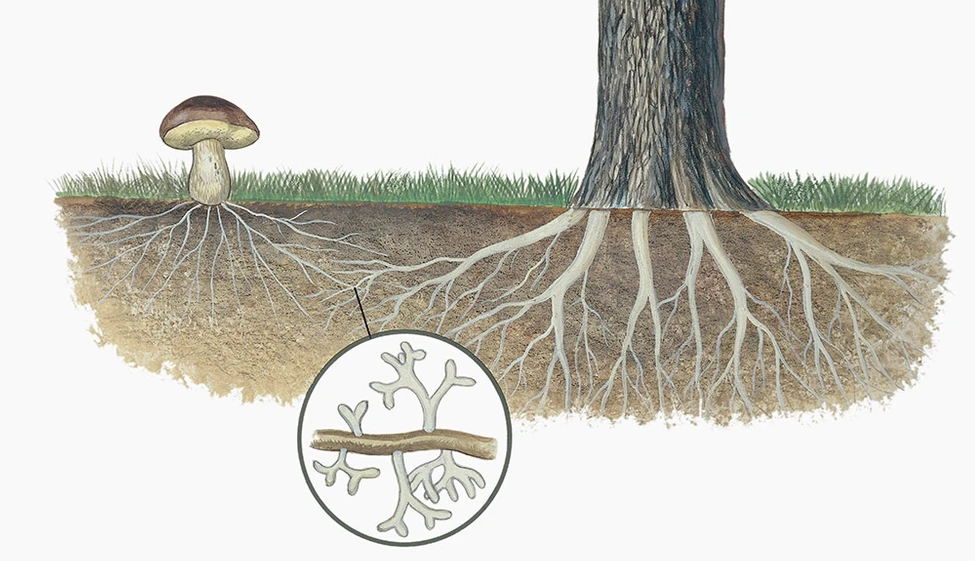Partnering with Fungi to Benefit Forest Ecosystems
Beneficial Fungal and Plant Associations
Fungi play an important role in ecosystem health globally, aiding in the breakdown of organic matter and forming symbiotic relationships with many varieties of plants, trees and other vegetation. Fungi that form mutualistic relationships with plants are known as mycorrhizae fungi, and have symbiotic associations with approximately 80-90% of all terrestrial plant species on earth. Trees and plants that are in a mutualistic association with mycorrhizae receive sugars from their plant hosts, and in exchange provide the plants with water and nutrients, such as nitrogen and phosphorus, from the soil.
There are two types of mycorrhizae fungi:
endomycorrhizae which are found inside a plant’s cells, and
ectomycorrhizae, which live on the outside of plant cell walls.
Ectomycorrhizae in particular prefer woody plant species such as trees and shrubs as their partners. Ectomycorrhizae assist trees and forests the capacity to adapt to seasonal and landscape changes, for example by providing adequate levels of water throughout the year and helping the plants to establish themselves in new soils. Scientists increasingly highlight the role mycorrhizal fungi can play in addressing the impacts of urbanization and climate change, ranging from helping forests absorb CO2, soil carbon dynamics, supporting drought tolerance, and improving the adaptive capacity of urban forests (Zak et al. 2019; Wang et al. 2021; Averill 2019).
Two interconnected nodes in the wood-wide web © Getty Images
Working with Decomposer Fungi
Saprophytic or decomposer fungi are also highly beneficial to plants and soils, and can be a great addition to your home garden. Many of the common mushrooms you find in your supermarket (eg. “White Button,” “Cremini,” or “Portobello”) are saprophytic. They feed on dead plant and animal remains, often found on fallen logs. They break down dead and decaying organic matter, contributing to nutrient cycling and thus ensure that various substances and minerals are available in the form that other organisms can use.
Growing mushrooms in the garden helps decompose common organic matter faster, while growing a food source. Decomposer fungi can be used to enrich your compost, and also can be combined with wood chips as a fungal rich mulch cover. Check out our Mycology in the Garden series to learn more and view instructional videos!
Photo by Courtney Celley/USFWS.
Cultivating Future resilience in Urban Forests
Over the past several decades, forest ecosystems and urban environments are undergoing a process of degradation globally, resulting in a reduction in biodiversity and the ecosystem services, or benefits they provide (DeFries et al., 2010; Chazdon, 2008; Aerts and Honnay, 2011). In South Central areas of the United States such as Central Texas, evidence of this degradation is mounting. A 2020 report from USDA’s Northern Forests Climate Hub for instance shows that the urban forest in the City of Austin, Texas will face significant challenges from climate change and urbanization including from extreme heat, drought, and pluvial flooding.
These trends are likely to accelerate over the coming years according to the latest UN Report from the IPCC, especially in urban areas with a high concentration of people, infrastructure, impervious surface (eg. asphalt, cement, and other paved surfaces) and low tree canopy.
To better understand this, the City of Austin worked with local partners to conduct the 2020 Community Tree Priority Mapping project. The results revealed significant equity and environmental justice concerns, highlighting a disproportionate distribution of trees on the City’s more affluent west side (78% canopy coverage) as compared to neighborhoods in East Austin (22% canopy coverage). These patterns reflect historical legacies of systemic racism from practices such as redlining, which limited access to home loans and homeownership, capital and investment among BIPOC communities in desirable areas of the City.
How Can you Use Fungi to Benefit Trees and the Urban Forest?
Click here to learn about 2 treatments Central Texas Mycological Society is experimenting at Circle Acres Preserve in partnership with Ecology Action of Texas.







